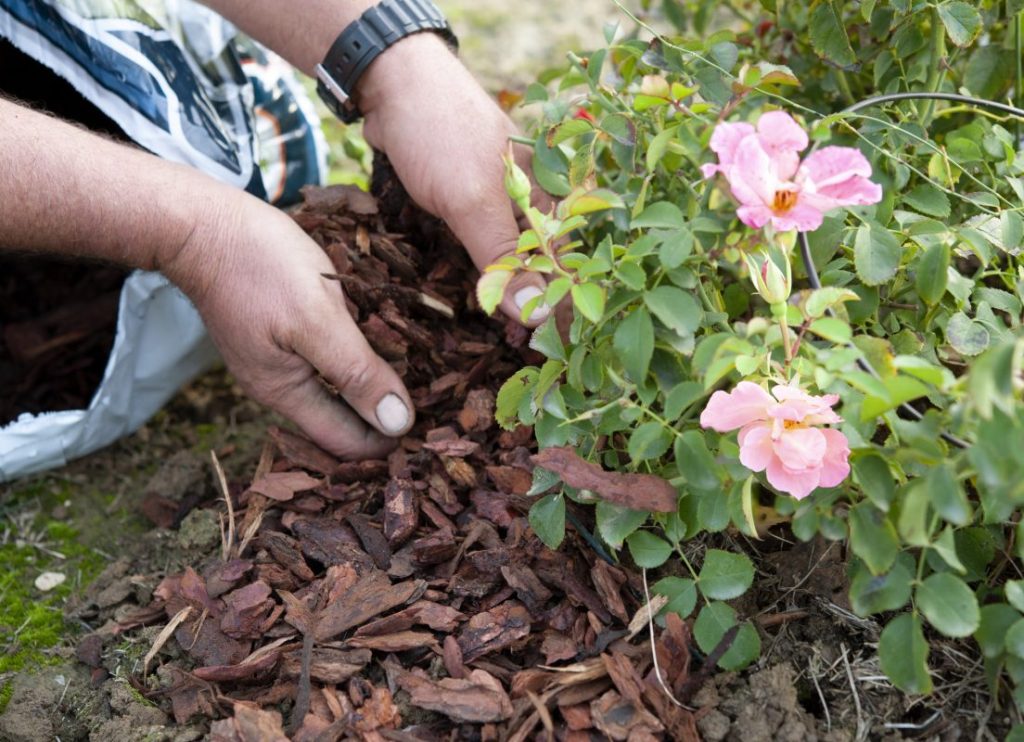Whether you’re new to gardening or you consider yourself to have ‘green fingers’, it’s likely you’ve heard of mulch – but are you clued up on what exactly it’s used for and the benefits it can bring to your outdoor space?
In this article, we take a closer look at mulching and how this landscaping technique can help improve your garden. We’ve also included a simple step-by-step guide on how to apply mulch, and what time of the year you should put this technique into practice. To find out more, keep reading.
What is mulching and its advantages?
Mulching is a simple gardening technique whereby mulch is applied to the surface of the soil. There are two main types of mulch to choose from – organic mulch and inorganic mulch. Organic mulch usually contains dead plant material, such as leaves, bark, garden compost, grass clippings and even rotted mature, while inorganic mulch consists of non-biodegradable matter, including gravel or rocks, as well as other landscaping materials such as plastic sheeting.
Either type of mulch can be added as a layer of material or loose coverings to the areas surrounding plants, flowers, hedges, bushes and some types of trees.
Depending on the type being used, there are many possible advantages to mulching. For example, mulching can:
- Help soil retain its moisture
- Suppress and prevent weeds
- Improve the condition of the soil
- Provide nutrients
- Reduce the need for watering
- Keep pests away
- Protect the plant roots from extreme temperatures
- Provide a decorative, aesthetically pleasing finish
Organic mulch breaks down naturally over time, gradually releasing nutrients into the soil and improving its structure. Inorganic mulch cannot do this, but it can suppress weeds, retain moisture and can add an attractive finish to beds and borders.
How to spread mulch
The good news is, mulching is relatively easy, but in order for the mulch to work as effectively as it should, it’s important that you know how to spread it correctly. Below, we provide a simple, step-by-step guide to spreading mulch so that you, and your outdoor space, can reap the benefits.
1. Prepare your soil
Before you start mulching, it’s crucial that you prepare your soil. This will save you a huge amount of time and effort, and it will give you the best results possible. Firstly, you should remove any weeds from the area, either using your hands or a weeding fork for those weeds with particularly deep roots. Next, rake the surface of the soil to level out any dips or hollows. You should then thoroughly water the soil so that once the mulch is applied on top of it, the water will be retained in the soil.
2. Apply the mulch
It’s now time to spread the mulch on the desired area. Simply add your chosen mulch to the soil, whether this is into a bed or around specific plants. Take care not to apply so much that you smother the plants, and be careful not to damage the lower stems.
It’s important to bear in mind that while a thick layer of mulch is likely to suppress more weeds, it could also mean that bulbs and plants may struggle to grow through, so it’s generally recommended to apply a layer that’s around 5 to 7cm deep. You can use your hands or a spade to add the mulch to the intended area.
3. Spread the mulch
Once the mulch is on top of the soil, use a rake to make sure it is evenly distributed across the area. To tidy up any loose pieces of mulch, you may want to use your hands.
When to mulch flower beds in spring
It’s best to apply mulch to your flower beds from mid to late spring. During this time of the year, some weeds have not yet germinated, while herbaceous plants (those with non-woody stems above ground) are still dormant, making it easier for you to spread your mulch without causing any damage. More specifically, it’s thought that April is the ideal time to start mulching with organic mulch, as the soil is accessible, moist and most plants are starting to grow.





